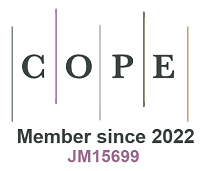REFERENCES
1. Jiang XH, Xing QJ, Luo XB, et al. Simultaneous photoreduction of Uranium(VI) and photooxidation of Arsenic(III) in aqueous solution over g-C3N4/TiO2 heterostructured catalysts under simulated sunlight irradiation. Appl Catal B Environ. 2018;228:29-38.
2. Li P, Wang J, Peng T, et al. Heterostructure of anatase-rutile aggregates boosting the photoreduction of U(VI). Appl Surf Sci. 2019;483:670-6.
3. Li P, Wang J, Wang Y, et al. Photoconversion of U(VI) by TiO2: an efficient strategy for seawater uranium extraction. Chem Eng J. 2019;365:231-41.
4. Abney CW, Mayes RT, Saito T, Dai S. Materials for the recovery of uranium from seawater. Chem Rev. 2017;117:13935-4013.
5. Li P, Wang Y, Wang J, et al. Carboxyl groups on g-C3N4 for boosting the photocatalytic U(VI) reduction in the presence of carbonates. Chem Eng J. 2021;414:128810.
6. Tatarchuk T, Shyichuk A, Mironyuk I, Naushad M. A review on removal of uranium(VI) ions using titanium dioxide based sorbents. J Mol Liq. 2019;293:111563.
7. Li Y, Zou G, Yang S, et al. Integration of bio-inspired adsorption and photodegradation for the treatment of organics-containing radioactive wastewater. Chem Eng J. 2019;364:139-45.
8. Parsons J, Buongiorno J, Corradini M, Petti D. A fresh look at nuclear energy. Science. 2019;363:105.
9. Xie Y, Liu Z, Geng Y, et al. Uranium extraction from seawater: material design, emerging technologies and marine engineering. Chem Soc Rev. 2023;52:97-162.
10. Kim J, Tsouris C, Mayes RT, et al. Recovery of uranium from seawater: a review of current status and future research needs. Sep Sci Technol. 2013;48:367-87.
11. Endrizzi F, Rao L. Chemical speciation of uranium(VI) in marine environments: complexation of calcium and magnesium ions with [(UO2)(CO3)3]4- and the effect on the extraction of uranium from seawater. Chemistry. 2014;20:14499-506.
12. Lei J, Liu H, Zhou L, et al. Progress and perspective in enrichment and separation of radionuclide uranium by biomass functional materials. Chem Eng J. 2023;471:144586.
13. Yu CX, Jiang W, Lei M, et al. Fabrication of carboxylate-functionalized 2D MOF nanosheet with caged cavity for efficient and selective extraction of uranium from aqueous solution. Small. 2024;20:e2308910.
14. Reeves B, Beccia MR, Solari PL, et al. Uranium uptake in Paracentrotus lividus sea urchin, accumulation and speciation. Environ Sci Technol. 2019;53:7974-83.
15. Kumar V, Singh V, Kim K, Kwon EE, Younis SA. Metal-organic frameworks for photocatalytic detoxification of chromium and uranium in water. Coordin Chem Rev. 2021;447:214148.
16. Chen T, Yu K, Dong C, et al. Advanced photocatalysts for uranium extraction: elaborate design and future perspectives. Coordin Chem Rev. 2022;467:214615.
17. Wang Y, Song M, Wei J, et al. Strengthening Fe(II)/Fe(III) dynamic cycling by surface sulfation to achieve efficient electrochemical uranium extraction at ultralow cell voltage. Environ Sci Technol. 2023;57:13258-66.
18. Kang J, Hang J, Chen B, et al. Amide linkages in pyrene-based covalent organic frameworks toward efficient photocatalytic reduction of uranyl. ACS Appl Mater Interfaces. 2022;14:57225-34.
19. Niklas JE, Hardy EE, Gorden AEV. Solid-state structural elucidation and electrochemical analysis of uranyl naphthylsalophen. Chem Commun. 2018;54:11693-6.
20. Schulz H, Yang S, Schovsbo NH, et al. The Furongian to Lower Ordovician Alum Shale Formation in conventional and unconventional petroleum systems in the Baltic Basin - A review. Earth-Sci Rev. 2021;218:103674.
21. Singhal P, Vats BG, Pulhani V. Magnetic nanoparticles for the recovery of uranium from sea water: challenges involved from research to development. J Ind Eng Chem. 2020;90:17-35.
22. Sun Y, Li Y. Application of surface complexation modeling on adsorption of uranium at water-solid interface: a review. Environ Pollut. 2021;278:116861.
24. Wang D, Song J, Wen J, et al. Significantly enhanced uranium extraction from seawater with mass produced fully amidoximated nanofiber adsorbent. Adv Energy Mater. 2018;8:1802607.
25. Rostamian R, Firouzzare M, Irandoust M. Preparation and neutralization of forcespun chitosan nanofibers from shrimp shell waste and study on its uranium adsorption in aqueous media. React Funct Polym. 2019;143:104335.
26. Xu X, Xu L, Ao J, et al. Ultrahigh and economical uranium extraction from seawater via interconnected open-pore architecture poly(amidoxime) fiber. J Mater Chem A. 2020;8:22032-44.
27. Wang Y, Zhang Y, Li Q, Li Y, Cao L, Li W. Amidoximated cellulose fiber membrane for uranium extraction from simulated seawater. Carbohydr Polym. 2020;245:116627.
28. Ahmad M, Wu F, Cui Y, Zhang Q, Zhang B. Preparation of novel bifunctional magnetic tubular nanofibers and their application in efficient and irreversible uranium trap from aqueous solution. ACS Sustain Chem Eng. 2020;8:7825-38.
29. Seko N, Katakai A, Tamada M, Sugo T, Yoshii F. Fine fibrous amidoxime adsorbent synthesized by grafting and uranium
30. Gupta NK, Sengupta A, Gupta A, Sonawane JR, Sahoo H. Biosorption-an alternative method for nuclear waste management: a critical review. J Environ Chem Eng. 2018;6:2159-75.
31. Kavakli PA, Seko N, Tamada M, Güven O. A highly efficient chelating polymer for the adsorption of uranyl and vanadyl ions at low concentrations. Adsorption. 2005;10:309-15.
32. Anirudhan TS, Lekshmi GS, Shainy F. Synthesis and characterization of amidoxime modified chitosan/bentonite composite for the adsorptive removal and recovery of uranium from seawater. J Colloid Interface Sci. 2019;534:248-61.
33. Muzzarelli RA. Potential of chitin/chitosan-bearing materials for uranium recovery: an interdisciplinary review. Carbohydr Polym. 2011;84:54-63.
34. Tian G, Geng J, Jin Y, et al. Sorption of uranium(VI) using oxime-grafted ordered mesoporous carbon CMK-5. J Hazard Mater. 2011;190:442-50.
35. Zhao S, Yuan Y, Yu Q, et al. A dual-surface amidoximated halloysite nanotube for high-efficiency economical uranium extraction from seawater. Angew Chem Int Ed Engl. 2019;58:14979-85.
36. Hua Y, Kukkar D, Brown RJC, Kim K. Recent advances in the synthesis of and sensing applications for metal-organic framework-molecularly imprinted polymer (MOF-MIP) composites. Crit Rev Env Sci Tec. 2023;53:258-89.
37. Li H, Eddaoudi M, O’Keeffe M, Yaghi OM. Design and synthesis of an exceptionally stable and highly porous metal-organic framework. Nature. 1999;402:276-9.
38. Wang Y, Shi Y, Xiong D, et al. Metal chloride functionalized MOF-253(Al) for high-efficiency selective separation of ammonia from H2 and N2. Chem Eng J. 2023;474:145307.
39. Yip YJ, Sivananthan GD, Lee SSC, Neo ML, Teo SL, Valiyaveettil S. Transfer of poly(methyl methacrylate) nanoparticles from parents to offspring and the protection mechanism in two marine invertebrates. ACS Sustain Chem Eng. 2022;10:37-49.
40. Su S, Che R, Liu Q, et al. Zeolitic imidazolate framework-67: a promising candidate for recovery of uranium (VI) from seawater. Colloid Surface A. 2018;547:73-80.
41. De Decker J, Folens K, De Clercq J, et al. Ship-in-a-bottle CMPO in MIL-101(Cr) for selective uranium recovery from aqueous streams through adsorption. J Hazard Mater. 2017;335:1-9.
42. Zhang L, Wang LL, Gong le L, Feng XF, Luo MB, Luo F. Coumarin-modified microporous-mesoporous Zn-MOF-74 showing ultra-high uptake capacity and photo-switched storage/release of U(VI) ions. J Hazard Mater. 2016;311:30-6.
43. Li L, Ma W, Shen S, Huang H, Bai Y, Liu H. A combined experimental and theoretical study on the extraction of uranium by amino-derived metal-organic frameworks through post-synthetic strategy. ACS Appl Mater Interfaces. 2016;8:31032-41.
44. Carboni M, Abney CW, Liu S, Lin W. Highly porous and stable metal–organic frameworks for uranium extraction. Chem Sci. 2013;4:2396.
45. Chen L, Bai Z, Zhu L, et al. Ultrafast and efficient extraction of uranium from seawater using an amidoxime appended metal-organic framework. ACS Appl Mater Interfaces. 2017;9:32446-51.
46. Yang W, Bai ZQ, Shi WQ, et al. MOF-76: from a luminescent probe to highly efficient U(VI) sorption material. Chem Commun. 2013;49:10415-7.
47. Wu Y, Li B, Wang X, et al. Magnetic metal-organic frameworks (Fe3O4@ZIF-8) composites for U(VI) and Eu(III) elimination: simultaneously achieve favorable stability and functionality. Chem Eng J. 2019;378:122105.
48. Bai C, Zhang M, Li B, et al. Three novel triazine-based materials with different O/S/N set of donor atoms: one-step preparation and comparison of their capability in selective separation of uranium. J Hazard Mater. 2015;300:368-77.
49. Zhang S, Zhao X, Li B, et al. “Stereoscopic” 2D super-microporous phosphazene-based covalent organic framework: design, synthesis and selective sorption towards uranium at high acidic condition. J Hazard Mater. 2016;314:95-104.
50. Xiong XH, Yu ZW, Gong LL, et al. Ammoniating covalent organic framework (COF) for high-performance and selective extraction of toxic and radioactive uranium ions. Adv Sci. 2019;6:1900547.
51. Zhang M, Li Y, Bai C, et al. Synthesis of microporous covalent phosphazene-based frameworks for selective separation of uranium in highly acidic media based on size-matching effect. ACS Appl Mater Interfaces. 2018;10:28936-47.
52. Zhang J, Zhou L, Jia Z, et al. Construction of covalent organic framework with unique double-ring pore for size-matching adsorption of uranium. Nanoscale. 2020;12:24044-53.
53. Guo R, Liu Y, Huo Y, Zhang A, Hong J, Ai Y. Chelating effect between uranyl and pyridine N containing covalent organic frameworks: a combined experimental and DFT approach. J Colloid Interface Sci. 2022;606:1617-26.
54. Yu J, Yuan L, Wang S, et al. Phosphonate-decorated covalent organic frameworks for actinide extraction: a breakthrough under highly acidic conditions. CCS Chem. 2019;1:286-95.
55. Li J, Yang X, Bai C, et al. A novel benzimidazole-functionalized 2-D COF material: synthesis and application as a selective solid-phase extractant for separation of uranium. J Colloid Interface Sci. 2015;437:211-8.
56. Li B, Sun Q, Zhang Y, et al. Functionalized porous aromatic framework for efficient uranium adsorption from aqueous solutions. ACS Appl Mater Interfaces. 2017;9:12511-7.
57. Aguila B, Sun Q, Cassady H, Abney CW, Li B, Ma S. Design strategies to enhance amidoxime chelators for uranium recovery. ACS Appl Mater Interfaces. 2019;11:30919-26.
58. Sun Q, Aguila B, Perman J, et al. Bio-inspired nano-traps for uranium extraction from seawater and recovery from nuclear waste. Nat Commun. 2018;9:1644.
59. Li Z, Meng Q, Yang Y, Zou X, Yuan Y, Zhu G. Constructing amidoxime-modified porous adsorbents with open architecture for cost-effective and efficient uranium extraction. Chem Sci. 2020;11:4747-52.
60. Shen Y, Chu N, Yang S, Li X, Cao H, Tian G. Quaternary phosphonium-grafted porous aromatic framework for preferential uranium adsorption in alkaline solution. Ind Eng Chem Res. 2019;58:18329-35.
61. Yuan Y, Yang Y, Ma X, et al. Molecularly imprinted porous aromatic frameworks and their composite components for selective extraction of uranium ions. Adv Mater. 2018;30:e1706507.
62. Yuan Y, Meng Q, Faheem M, et al. A molecular coordination template strategy for designing selective porous aromatic framework materials for uranyl capture. ACS Cent Sci. 2019;5:1432-9.
63. Dai Z, Zhao S, Lian J, Li L, Ding D. Efficient visible-light-driven photoreduction of U(VI) by carbon dots modified porous g-C3N4. Sep Purif Technol. 2022;298:121590.
64. Zhong X, Liu Y, Zeng W, Zhu Y, Hu B. Excellent photoreduction performance of U(VI) on metal organic framework/covalent organic framework heterojunction by solar-driven. Sep Purif Technol. 2022;285:120405.
65. Xu R, Cui W, Zhang C, et al. Vinylene-linked covalent organic frameworks with enhanced uranium adsorption through three synergistic mechanisms. Chem Eng J. 2021;419:129550.
66. Li ZJ, Huang ZW, Guo WL, et al. Enhanced photocatalytic removal of uranium(VI) from aqueous solution by magnetic TiO2/Fe3O4 and its graphene composite. Environ Sci Technol. 2017;51:5666-74.
67. Wu F, Zhang Z, Cheng Z, et al. The enhanced photocatalytic reduction of uranium(VI) by ZnS@g-C3N4 heterojunctions under sunlight. J Radioanal Nucl Chem. 2021;329:1125-33.
68. Salomone VN, Meichtry JM, Schinelli G, Leyva AG, Litter MI. Photochemical reduction of U(VI) in aqueous solution in the presence of 2-propanol. J Photoch Photobio A. 2014;277:19-26.
69. Wang G, Zhen J, Zhou L, Wu F, Deng N. Adsorption and photocatalytic reduction of U(VI) in aqueous TiO2 suspensions enhanced with sodium formate. J Radioanal Nucl Chem. 2015;304:579-85.
70. Liu N, Li R, Zhu J, et al. Z-scheme heterojunction ZnS/WO3 composite: photocatalytic reduction of uranium and band gap regulation mechanism. J Colloid Interface Sci. 2023;630:727-37.
71. Liu C, Hsu PC, Xie J, et al. A half-wave rectified alternating current electrochemical method for uranium extraction from seawater. Nat Energy. 2017;2:17007.
72. Yang H, Liu X, Hao M, et al. Functionalized iron-nitrogen-carbon electrocatalyst provides a reversible electron transfer platform for efficient uranium extraction from seawater. Adv Mater. 2021;33:e2106621.
73. Liu X, Xie Y, Hao M, et al. Highly efficient electrocatalytic uranium extraction from seawater over an amidoxime-functionalized In-N-C catalyst. Adv Sci. 2022;9:e2201735.
74. Wang LL, Luo F, Dang LL, et al. Ultrafast high-performance extraction of uranium from seawater without pretreatment using an acylamide- and carboxyl-functionalized metal–organic framework. J Mater Chem A. 2015;3:13724-30.
75. Li JQ, Gong LL, Feng XF, et al. Direct extraction of U(VI) from alkaline solution and seawater via anion exchange by metal-organic framework. Chem Eng J. 2017;316:154-9.
76. Song Y, Zhu C, Sun Q, et al. Nanospace decoration with uranyl-specific “Hooks” for selective uranium extraction from seawater with ultrahigh enrichment index. ACS Cent Sci. 2021;7:1650-6.
77. Ismail AF, Yim M. Investigation of activated carbon adsorbent electrode for electrosorption-based uranium extraction from seawater. Nucl Eng Technol. 2015;47:579-87.
78. Sun Q, Song Y, Aguila B, Ivanov AS, Bryantsev VS, Ma S. Spatial engineering direct cooperativity between binding sites for uranium sequestration. Adv Sci. 2021;8:2001573.
79. Cui W, Zhang C, Liang R, Qiu J. Covalent organic framework hydrogels for synergistic seawater desalination and uranium extraction. J Mater Chem A. 2021;9:25611-20.
80. Guo X, Chen R, Liu Q, et al. Graphene oxide and silver ions coassisted zeolitic imidazolate framework for antifouling and uranium enrichment from seawater. ACS Sustain Chem Eng. 2019;7:6185-95.
81. Cheng G, Zhang A, Zhao Z, et al. Extremely stable amidoxime functionalized covalent organic frameworks for uranium extraction from seawater with high efficiency and selectivity. Sci Bull. 2021;66:1994-2001.
82. Zhang C, Cui W, Niu C, et al. rGO-based covalent organic framework hydrogel for synergistically enhance uranium capture capacity through photothermal desalination. Chem Eng J. 2022;428:131178.
83. Ma L, Gao J, Huang C, et al. UiO-66-NH-(AO) MOFs with a new ligand BDC-NH-(CN) for efficient extraction of uranium from seawater. ACS Appl Mater Interfaces. 2021;13:57831-40.
84. Cui W, Zhang C, Xu R, et al. High-efficiency photoenhanced extraction of uranium from natural seawater by olefin-linked covalent organic frameworks. ACS EST Water. 2021;1:440-8.
85. Wang D, Song J, Lin S, et al. A marine-inspired hybrid sponge for highly efficient uranium extraction from seawater. Adv Funct Mater. 2019;29:1901009.
86. Zhang CR, Cui WR, Xu RH, et al. Alkynyl-based sp2 carbon-conjugated covalent organic frameworks with enhanced uranium extraction from seawater by photoinduced multiple effects. CCS Chem. 2021;3:168-79.
87. Yuan Y, Liu T, Xiao J, et al. DNA nano-pocket for ultra-selective uranyl extraction from seawater. Nat Commun. 2020;11:5708.
88. Cui WR, Li FF, Xu RH, et al. Regenerable covalent organic frameworks for photo-enhanced uranium adsorption from seawater. Angew Chem Int Ed Engl. 2020;59:17684-90.
89. Wu Y, Cui W, Zhang C, Liang R, Qiu J. Regenerable, anti-biofouling covalent organic frameworks for monitoring and extraction of uranium from seawater. Environ Chem Lett. 2021;19:1847-56.
90. Yuan Y, Yu Q, Cao M, et al. Selective extraction of uranium from seawater with biofouling-resistant polymeric peptide. Nat Sustain. 2021;4:708-14.
91. Feng L, Wang H, Feng T, et al. In situ synthesis of uranyl-imprinted nanocage for selective uranium recovery from seawater. Angew Chem Int Ed Engl. 2022;61:e202101015.
92. Xu X, Yue Y, Cai D, et al. Aqueous solution blow spinning of seawater-stable polyamidoxime nanofibers from water-soluble precursor for uranium extraction from seawater. Small Methods. 2020;4:2000558.
93. Yang L, Xiao H, Qian Y, et al. Bioinspired hierarchical porous membrane for efficient uranium extraction from seawater. Nat Sustain. 2022;5:71-80.
94. Yan B, Ma C, Gao J, Yuan Y, Wang N. An ion-crosslinked supramolecular hydrogel for ultrahigh and fast uranium recovery from seawater. Adv Mater. 2020;32:e1906615.
95. Shi S, Qian Y, Mei P, et al. Robust flexible poly(amidoxime) porous network membranes for highly efficient uranium extraction from seawater. Nano Energy. 2020;71:104629.
96. Yuan Y, Zhao S, Wen J, et al. Rational design of porous nanofiber adsorbent by blow-spinning with ultrahigh uranium recovery capacity from seawater. Adv Funct Mater. 2019;29:1805380.
97. Wei H, Chai S, Hu N, Yang Z, Wei L, Wang L. The microwave-assisted solvothermal synthesis of a crystalline two-dimensional covalent organic framework with high CO2 capacity. Chem Commun. 2015;51:12178-81.
98. Cui WR, Zhang CR, Xu RH, et al. Low band gap benzoxazole-linked covalent organic frameworks for photo-enhanced targeted uranium recovery. Small. 2021;17:e2006882.
99. Yuan Y, Niu B, Yu Q, et al. Photoinduced multiple effects to enhance uranium extraction from natural seawater by black phosphorus nanosheets. Angew Chem Int Ed Engl. 2020;59:1220-7.
100. Yuan Y, Yu Q, Wen J, et al. Ultrafast and highly selective uranium extraction from seawater by hydrogel-like spidroin-based protein fiber. Angew Chem Int Ed Engl. 2019;58:11785-90.
101. Wang Z, Meng Q, Ma R, et al. Constructing an ion pathway for uranium extraction from seawater. Chem. 2020;6:1683-91.
102. Wang Z, Ma R, Meng Q, et al. Constructing uranyl-specific nanofluidic channels for unipolar ionic transport to realize ultrafast uranium extraction. J Am Chem Soc. 2021;143:14523-9.
103. Sun Q, Aguila B, Earl LD, et al. Covalent organic frameworks as a decorating platform for utilization and affinity enhancement of chelating sites for radionuclide sequestration. Adv Mater. 2018;30:e1705479.
104. Luo W, Xiao G, Tian F, et al. Engineering robust metal–phenolic network membranes for uranium extraction from seawater. Energy Environ Sci. 2019;12:607-14.
105. Yu Q, Yuan Y, Wen J, et al. A universally applicable strategy for construction of anti-biofouling adsorbents for enhanced uranium recovery from seawater. Adv Sci. 2019;6:1900002.
106. Cui WR, Zhang CR, Liang RP, Liu J, Qiu JD. Covalent organic framework sponges for efficient solar desalination and selective uranium recovery. ACS Appl Mater Interfaces. 2021;13:31561-8.
107. Bai Z, Liu Q, Zhang H, et al. Anti-biofouling and water-stable balanced charged metal organic framework-based polyelectrolyte hydrogels for extracting uranium from seawater. ACS Appl Mater Interfaces. 2020;12:18012-22.
108. Chen Z, Wang J, Hao M, et al. Tuning excited state electronic structure and charge transport in covalent organic frameworks for enhanced photocatalytic performance. Nat Commun. 2023;14:1106.
109. Yang H, Hao M, Xie Y, et al. Tuning local charge distribution in multicomponent covalent organic frameworks for dramatically enhanced photocatalytic uranium extraction. Angew Chem Int Ed Engl. 2023;62:e202303129.
110. Li M, Zhang Z, Yu Y, et al. Recent advances in Zn-MOFs and their derivatives for cancer therapeutic applications. Mater Adv. 2023;4:5050-93.
111. Zhong Y, Peng Z, Peng Y, et al. Construction of Fe-doped ZIF-8/DOX nanocomposites for ferroptosis strategy in the treatment of breast cancer. J Mater Chem B. 2023;11:6335-45.
112. Chen D, Zhao X, Jing X, Zhao R, Zhu G, Wang C. Bio-inspired functionalization of electrospun nanofibers with anti-biofouling property for efficient uranium extraction from seawater. Chem Eng J. 2023;465:142844.
113. Xu X, Zhang H, Ao J, et al. 3D hierarchical porous amidoxime fibers speed up uranium extraction from seawater. Energy Environ Sci. 2019;12:1979-88.
114. Kuo L, Pan H, Wai CM, et al. Investigations into the reusability of amidoxime-based polymeric adsorbents for seawater uranium extraction. Ind Eng Chem Res. 2017;56:11603-11.








